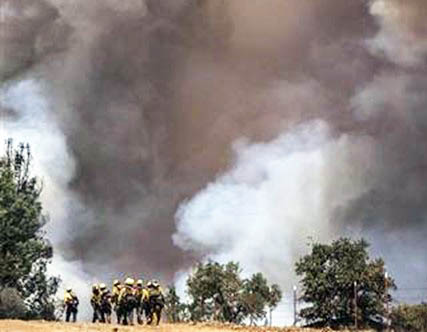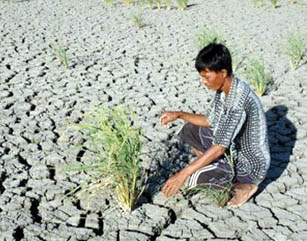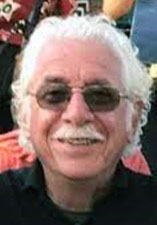|
|
|
|
The weekly newsletter of the México Solidarity Project |
|
|
|
Online at mexicosolidarityproject.org |
|
November 23, 2022/ This week's issue/ Meizhu Lui, for the editorial team |
|
|
Young activists at COP 27. Photo: Dominika Zarzycka/NurPhoto/The Nation |
|
At COP 27, Youth to Rich Nations: ‘Don’t Cop Out!’ |
|
My neighbor Shane moved to rural Hawaii from his home in Paradise, California, after devastating fires had burned down his home. Shane says climate change forced his relocation. Is he a “climate migrant”?
We typically reserve the term “climate migrant” for impoverished people fleeing climate horrors where climate change has left their way of life no longer tenable. But the word “migrant” itself carries distinctly negative connotations. In the United States, far too many see migrants as an invasion of army ants or some sort of pestilence.
From the days of the Chinese “yellow hordes” to Donald Trump’s fulminations against Mexican “rapists and murderers,” people in the US have been taught that migrants threaten our security. But we see Shane, a white, middle-class American citizen, as someone who simply made a sensible choice. The use of language really matters, as Gabriella Baldonado, our interviewee this week, so perceptively understands.
What can be done for potential climate migrants who see the “slow violence” of climate disaster looming? What can we do so they won’t feel forced to leave home? Two obvious steps can help: a drastic reduction in emissions from our world’s worst-polluting nations and meaningful aid that can help threatened nations withstand climate carnage.
At COP 27, the just-concluded global environmental summit, young people — the folks who’ll still be living when our planet’s crises become unbearable — demanded action on both these two fronts.
In California, the town of Paradise may have become Hell, but my neighbor had options, and no one despises him for moving to a new environment. All people around the world deserve the same consideration. Let’s listen to the common sense of our young. |
|
|
|
Don’t miss an issue. Subscribe to the weekly México Solidarity Bulletin! |
|
|
|
|
Standing at the Climate Justice Struggle Forefront |
|
Gabriella Baldonado — part of today’s new rising generation of climate experts and activists — can trace her family’s lineage back to Apache/Spanish ancestors living in México before their lands became part of New Mexico after annexation in 1848. Baldonado earned her bachelor’s degree this past spring from Cal State Monterey Bay, and she’s researched extensively how US media have been framing climate-induced human migration from the Northern Triangle of Central America. Gabriella hopes to take part in reshaping the international protocol for receiving migrants into a compassionate and collaborative global network that recognizes and defends the autonomy of all migrants. |
|
|
When did you start focusing on climate change?
My epiphany moment about climate change — as something not distant in time or space — came in my high school senior year in 2013. Smoke from the Rim Fire in California’s Sierra Nevada mountains had spread for miles and closed my school. Then, in 2020, a severe drought in Santa Cruz led to a wildfire that made it pitch black at 2 p.m. The smoke made it impossible to breathe, and we had to stuff towels under our door jamb to keep the smoke out. Really scary! |
|
Many Californians are relocating as a result of conditions like these. But we don’t call relocations “climate migration” when wealthier families are doing the moving. Record numbers of people from the US are moving to México, an 86 percent increase over the last few years. Could climate change be one factor?
Migration gets caused by both “pull” factors from the receiving country and “push” factors from the country of origin. Which do you now see as the stronger factor, and what role does climate change play in the equation? |
|
|
Smoke from the Rim Fire. Max Whittaker/Reuters |
|
Most migration to the US in the past reflected economic “pull” factors. Most migrants have been Mexican men looking for seasonal agricultural work. But “push” factors have become stronger over the last 10 years. We now see poverty, violence, and food insecurity pushing families and unaccompanied minors to leave Central America.
So how does climate change factor in? Climate change operates as a threat multiplier, exacerbating people’s vulnerabilities. If a flood or drought happens and you have no savings, you’ll become poor and food insecure.
Unfortunately, we have no refugee or asylee protocol for climate migrants, and that leaves migrants likely to be turned back or deported later.
The countries of the Northern Triangle — Guatemala, El Salvador, and Honduras — appear especially vulnerable. What about México? What responsibility does México have for the migrants passing through?
México also has climate vulnerabilities. But México also has a stronger economy that increases the Mexican government’s adaptive capacity.
Trump put responsibility on México for the Central American migrants. In issuing Title 42, or the “Stay in México” policy, he used the excuse that the migrants posed a public health threat. This opportunistic ploy to avoid US responsibility used fear of Covid to justify closing the border. Trump, a pandemic denier, was blaming migrants moving through México for Covid’s spread!
But, of course, México does not bear sole responsibility, in either of responsibility’s two aspects. First, who should pay for mitigation and adaptation in the poorer countries affected by the climate disaster high-emission countries are causing? The US emits 25 percent of the world’s greenhouse gas emissions. The countries of the Northern Triangle emit just 0.1 percent. This question of financial burden came up big at COP 27.
The second question: Who should receive climate migrants? This question needs far more attention. |
|
You find the concept of “slow violence” useful. Can you explain?
This term, first used by Rob Nixon, expands our conceptual understanding of violence.
We usually think in terms of an identifiable perpetrator and a victim. But what about things like an oil spill, Agent Orange, or drought? Sickness and death come slowly in these cases and at a large scale. |
|
|
Photo: Shutterstock |
|
To me, “slow violence” fits climate change perfectly. To gain asylum, you have to prove you have or will have experienced persecution in your home country. But if climate change’s slow violence forced you to migrate, you would not qualify you as a valid asylum seeker. That’s why we need new protocols.
How does the US frame migration? How should we frame migration?
The US media use a language for migration that mimics climate disaster! The media speak about migration with non-human terms: a “flood” of mirants, a “surge,” an “explosion.” We need to de-politicize migration. We should see this migration as normal climate adaptation, something humans have been doing forever.
We also see “border security” used as a frame. In the literature, the more we see “security,” the less we see mentions of climate change. This “security” frame will not help us solve the problem. |
|
Young people stand at the forefront of the global climate justice movement. Why?
Greta Thunberg has been a big influence and inspiration for young people. Her “Fridays for the Future” became a global movement. In India, one activist started protesting outside parliament at age six! Young people have stood up for indigenous rights at Standing Rock, water rights in South America, land management in Africa. |
|
|
Greta Thunberg, left, at a UN climate protest. Photo: WION |
|
The younger generation has been able to tackle climate change because we grew up in a globalized world order. The young people of Generation Z are constantly communicating with each other across the globe. We know climate change will be our future. And we will be the future for the world’s climate. |
|
|
Is AMLO Strenghening or Weakening Democracy? |
|
The fight for democracy is happening everywhere. We saw democracy under siege in the US midterm elections as a reactionary Republican Party led a movement to restrict voting rights, threaten election workers, and gerrymander electoral districts to limit African American and Latino voting power. That same anti-democratic movement threatened to refuse to accept the results of elections if defeated. |
|
US voters largely rejected this Trumpista attempt to subvert democratic processes, despite a hysterical mainstream media that predicted a Republican “red wave.” Those who know what it means to be marginalized — African American and Latinos, women and youth — became the backbone of the vote that fended off the right-wing attack. |
|
|
With repressive elitist forces still active all around the world, the fight for democracy remains critical. But Latin America has become the region that’s turning the tide — pink! Throughout Latin America, social democratic leaders have been replacing right-wing governments. Voters recently elected working class leader Lula da Silva the new president in Brazil, defeating the neo-fascist Jair Bolsonaro, who had received a loud — como siempre — endorsement from Donald Trump.
If the Morena Party of AMLO can consolidate and continue its political dominance, México could well become the political anchor for this Pink Tide. But is México fighting for democracy? On November 13, tens of thousands of demonstrators gathered in México City’s main boulevard to protest new proposals by Mexican President Andrés Manuel López Obrador to overhaul México’s National Electoral Institute, the INE.
This INE has for decades favored and benefited the PRI and the PAN, parties that mainly support the interests of México’s oligarchic ruling class. The INE system, many Mexicanos believe, denied victory to Cuauhtémoc Cárdenas when he ran for president in 1988 and did the same to AMLO in 2006. Both candidates most likely won a clear majority of the nation’s votes. Fortunately, the victory of AMLO and the Morena party in 2018 turned out to be so overwhelming that the ruling class this time couldn’t steal the elections.
AMLO’s new electoral reform initiative will eliminate state-level electoral offices, slash the amount of public money going to political parties, and allow the Mexican people — not the lower chamber of the Mexican Congress — to elect members of the INE. The reform would also reduce that lower chamber from 500 to 300 members and the Mexican Senate from 128 to 96 by eliminating at-large members not chosen by voters, but rather given seats based on the proportion of a party’s votes.
The US media, no surprise, has given overwhelmingly favorable coverage to the anti-AMLO demonstrators, characterizing the reforms proposed by AMLO and Morena as a movida to weaken democracy, como siempre. I find myself suspecting, when I read articles along this line, that AMLO must be proposing something really positive for democracy.
In any case, the fate of AMLO’s proposals will ultimately be up to the Mexican people to decide, as it should be. |
|
Bill Gallegos, a veteran Chicano |
|
|
|
Recent news reports and commentaries, from progressive and mainstream media,
Jeffery Hermanson, México’s Independent Union Movement: An Overview of Recent Victories and Challenges Ahead, Labor Notes. The most comprehensive rundown yet on the historic organizing that’s reshaping México’s labor movement.
México asume nuevos compromisos ambientales en la COP27, La Coperacha. En el marco de la 27° Conferencia de Naciones Unidas sobre Cambio Climático (COP27), que inició el 7 de noviembre en Egipto, la delegación mexicana llevó nuevos compromisos climáticos como reducir en un 35% la emisión de gases de efecto invernadero para el año 2030.
AMLO preparing ‘Plan B’ for electoral reform; calls for supporters to march, México News Daily. The reform proposes replacing the National Electoral Institute, the INE in Spanish, with a centralized electoral authority and selecting electoral officials through a citizen vote, among other changes.
Comunidad gana a refresquera: Conagua le retira concesión y dejará Oaxaca en 4 años, Sin Embargo. Con la firma del acuerdo, la refresquera se compromete a restituir las 17 hectáreas de tierras y ya no explotará el agua de la comunidad de San Bartolo.
Zenyazen Flores, México’s Proposed Ban of GM Corn Could Fuel New Trade Dispute With US, Bloomberg Línea. The ban on GM corn imports seeks to achieve food sovereignty with environmentally sustainable agro-technologies and without agro-toxins.
Cecilia Higuera Albarrán, Cancillería: México rechaza medidas anunciadas por el gobernador texano Greg Abbott, Cronica. El Gobierno de México externó su rechazo a las medidas anunciadas este martes, por el gobernador de Texas en relación con el involucramiento de autoridades estatales en acciones de control migratorio y fronterizo entre México y los Estados Unidos de América.
Rick Martin, México President Hits Back at Massive Protests Against Electoral Plan: It’s ‘Racist’ and ‘Classist,’ Latin Post. AMLO’s initiative includes eliminating state-level electoral offices, cutting public financing of political parties, and allowing the public to elect members of the electoral authority instead of the lower chamber of Congress.
Arturo Cano, Defender a la familia y a Dios, arenga Trump a los ultras reunidos en México, La Jornada. En la pantalla de CPAC México, las palabras de Donald Trump.
México’s Senate Approves Granting More Vacations to Employees, National Law Review. México currently ranks as one of the countries in the world with the fewest number of paid vacation days for employees, yet Mexican employees work more hours on average than other workers in the Western Hemisphere.
Ernesto Villanueva, Reforma electoral, luces y sombras, Proceso. La discusión sobre la naturaleza jurídica del Instituto Nacional Electoral (INE) es un falso debate. Nadie ha propuesto que la organización de las elecciones federales y locales regresen a la esfera del Poder Ejecutivo. |
|
|
The Mexico Solidarity Project brings together activists from various socialist and left organizations and individuals committed to worker and global justice who see the 2018 election of Andrés Manuel López Obrador as president of México as a watershed moment. AMLO and his progressive Morena party aim to end generations of corruption, impoverishment, and subservience to US interests. Our Project supports not just Morena, but all Mexicans struggling for basic rights, and opposes US efforts to undermine organizing and México’s national sovereignty.
Editorial committee: Meizhu Lui, Bruce Hobson, Bill Gallegos, Sam Pizzigati, Courtney Childs, Victoria Hamlin, Agatha Hinman, Steven Hollis. To give feedback or get involved yourself, please email us! |
|
|
|
Web page and application support for the México Solidarity Project from NOVA Web Development, a democratically run, worker-owned and operated cooperative focused on developing free software tools for progressive organizations. |











